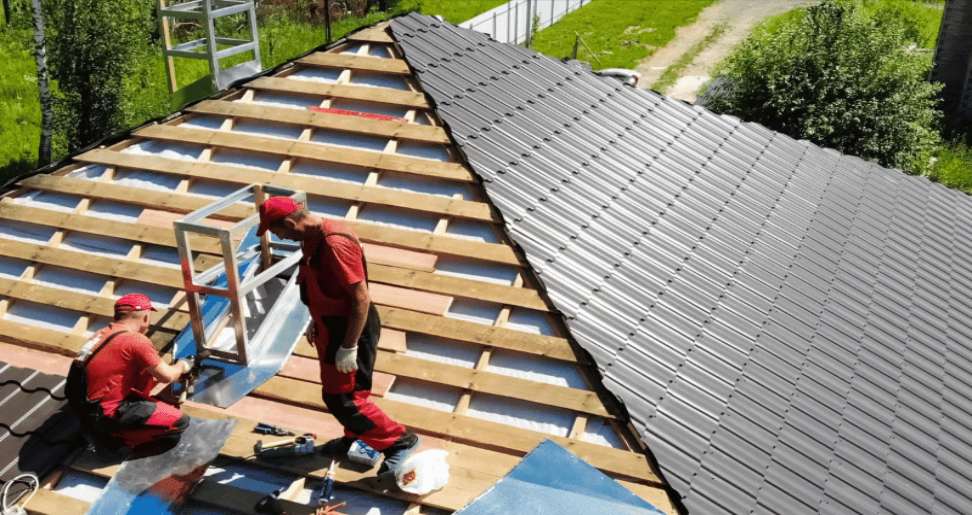Roofing is a critical component of any building, offering protection, insulation, and aesthetic appeal. A well-maintained roof not only enhances the longevity of the structure but also contributes to energy efficiency and overall comfort. This comprehensive guide delves into the essential aspects of roof services, including installation, maintenance, and key considerations such as full roof replacement and cooling roof installation.
Roof Installation: The Foundation of a Reliable Roof
The roof installation process is the first step in ensuring a durable and effective roofing system. A proper installation involves several key phases, each crucial to achieving optimal performance and longevity.
Selecting the Right Roofing Material
The choice of roofing material significantly impacts the performance and appearance of the roof. Options include asphalt shingles, metal roofing, clay tiles, and synthetic materials. Factors to consider include the climate, architectural style, and budget. Each material has its advantages; for instance, metal roofing offers durability and energy efficiency, while clay tiles provide a traditional aesthetic and excellent weather resistance.
Professional Installation
Engaging a professional roofing contractor is essential for a successful installation. Experienced contractors ensure that the roof is installed according to industry standards, with precise attention to details such as flashing, ventilation, and insulation. Proper installation minimizes the risk of leaks, poor performance, and premature wear.
Full Roof Replacement: When and Why
Over time, roofs may suffer from wear and tear due to age, weather conditions, and other factors. A full roof replacement becomes necessary when repairs are no longer cost-effective or when the roof has reached the end of its serviceable life.
Signs You Need a Full Roof Replacement
Recognizing the signs that indicate the need for a full roof replacement is crucial. These signs include:
- Extensive Damage: If the roof has multiple leaks, missing shingles, or extensive damage to the underlying structure, a replacement may be the most viable option.
- Age of the Roof: Most roofs that have a lifespan of 20 to 25 years. If your house roof is approaching or through exceeding the age, this also may be the right time for considering a replacement.
- Inefficiency: An old roof may no longer provide adequate insulation, leading to higher energy bills. In such cases, a new roof can improve energy efficiency and comfort.
Benefits of a Full Roof Replacement
A full roof replacement offers several benefits, including enhanced structural integrity, improved energy efficiency, and updated aesthetics. Newer roofing materials often come with advanced features such as better insulation and improved resistance to weather conditions.
Cooling Roof Installation: Enhancing Energy Efficiency
In response to growing concerns about energy consumption and climate control, cooling roof installation has emerged as a popular solution for enhancing energy efficiency and reducing cooling costs.
What is a Cooling Roof?
A cooling roof, also known as a reflective or cool roof, is designed to reflect more sunlight and absorb less heat compared to traditional roofing materials. This reflective capability helps to lower the temperature of the roof surface and reduce the heat transferred into the building.
Benefits of Cooling Roof Installation
The installation of a cooling roof offers several advantages:
- Reduced Energy Costs: By reflecting more sunlight and absorbing less heat, cooling roofs can significantly lower air conditioning costs, especially in hot climates.
- Enhanced Comfort: Cooling roofs help maintain a more consistent indoor temperature, enhancing comfort for occupants.
- Extended Roof Life: By reducing the thermal stress on the roofing materials, cooling roofs can contribute to a longer lifespan of the roof.
Considerations for Installation
When considering a cooling roof installation, it is important to choose materials with high reflectivity and thermal emittance ratings. Professional installation ensures that the cooling roof performs as intended, maximizing energy savings and comfort.
Roof Maintenance: Ensuring Longevity and Performance
Regular maintenance is key to prolonging the life of a roof and ensuring its continued performance. A well-maintained roof can prevent costly repairs and extend the time between replacements.
Routine Inspections
Scheduled inspections by a professional roofing contractor can identify potential issues before they escalate. Inspections should include checking for damaged shingles, clogged gutters, and signs of leaks.
Cleaning and Repairs
Keeping the roof clean and addressing minor repairs promptly can prevent more significant problems. Removing debris from gutters and ensuring proper drainage are essential for preventing water damage and maintaining the roof’s integrity.
Seasonal Considerations
Different seasons present unique challenges for roof maintenance. In winter, it is important to address ice dams and snow accumulation, while in summer, regular inspections can prevent damage from intense heat and UV exposure.
Conclusion
Roof services encompass a range of activities from initial installation to ongoing maintenance. Understanding the importance of full roof replacement and the benefits of cooling roof installation can help homeowners and property managers make informed decisions that enhance the durability, energy efficiency, and overall performance of their roofing systems. By prioritizing professional installation, regular maintenance, and timely replacements, you can ensure that your roof continues to provide reliable protection and comfort for years to come.
Additional:
- Google’s Algorithm Updates For 2024
- 14 Steps To Signing More Digital Marketing Clients
- How Google Indexes New Content: What You Should Be Doing?

